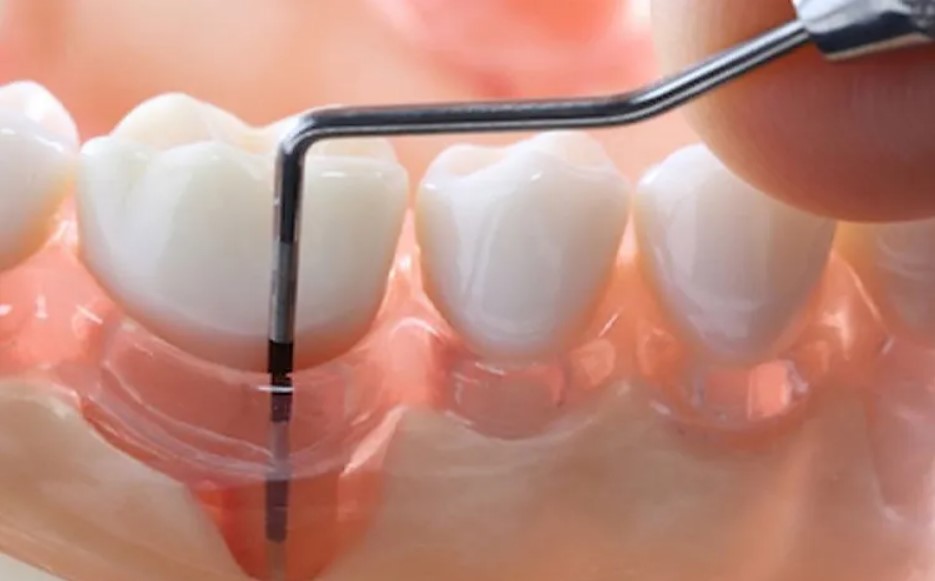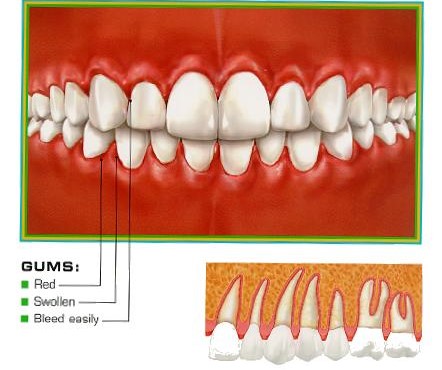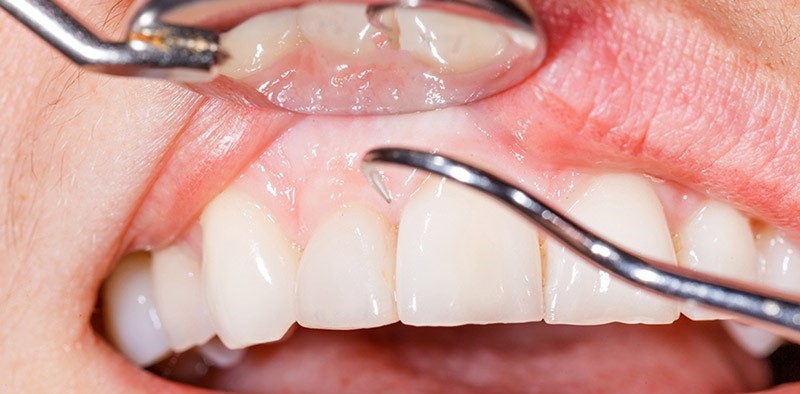Service Details
Periodontal / Gum Treatment
What are periodontal (gum) diseases?
Periodontal disease is broken down into different stages, each of which is characterized by a set of symptoms that help the periodontist understand how far it has progressed. The three main stages of gum disease include:
- Gingivitis – Early stage symptoms include inflammation of the gums, but the bone and connective tissue are not affected.
- Periodontitis – Gums are irreversibly damaged, but further damage can be prevented.
- Advanced periodontitis – Gums are destroyed, and teeth are beginning to shift or loosen
The more advanced periodontal disease becomes, the more complex the treatment will be to restore oral health.

Is gingivitis reversible?
Gingivitis is the only stage of gum disease that can be reversed. By working closely with a dentist or periodontist, and following their instructions for a proper oral hygiene routine, most people can restore the health of their gums. When left untreated and the gum disease progresses, however, the gums become irreversibly damaged.
How do you prevent gingivitis?
Gingivitis can be prevented by practicing proper oral hygiene. This means brushing twice a day and flossing once a day, or more if instructed by your periodontist. Regular professional teeth cleanings and bi-annual visits to the dentist are also essential for keeping your gums and teeth healthy.
What Are the Symptoms of Gingivitis?
Gingivitis, or early gum disease, often produces symptoms such as red, tender gums and bleeding while flossing. You also might notice bleeding while eating hard or crunchy foods. Your dental hygienist might tell you that you have some pockets in your gums where they attach to your teeth.

What are the different types of periodontitis?
Periodontitis is a broad term that is characterized by damage to gums and periodontal tissue. There are different types of periodontitis, some classified by the rate of advancement and others by the specific associated symptoms. The four different types of periodontitis include:
- Chronic periodontitis – characterized by gradual pocket formation and bone destruction
- Aggressive periodontitis – characterized by rapid loss of gums and bone deterioration
- Periodontitis as a manifestation of systemic disease – common in people suffering from certain systemic diseases, such as heart disease, leukemia, and diabetes
- Necrotizing periodontal disease – characterized by the death of gum tissue, rapid periodontal destruction, and bone loss often due to the deprivation of nourishment; typically involves intense pain
It’s important to work closely with a periodontist if you have any type of gum disease. It will not go away on its own, but a periodontist can help restore your oral health.
Periodontitis treatment options
An experienced and well-trained periodontist can help treat periodontitis at any stage, but the scope and complexity of the treatment required will depend on the severity of the disease and the individual needs of the patient.
Some periodontitis treatment options include:
- Scaling – A cleaning procedure that scrapes away plaque and tartar buildup
- Root planing – A procedure that smoothens tooth root surfaces to encourage seamless attachment of gums and discourage further plaque buildup
- Antibiotics – May sometimes be used to help eliminate infection beneath the gums
- Pocket-reduction surgery – Involves folding back gum tissue and exposing tooth roots for more thorough scaling and root planing
- Soft-tissue grafts – Tissue is transplanted from the roof of the mouth and used to build up strong gum tissue around the teeth
- Bone grafts – Surgical placement of small particles of bone and growth factors to encourage regeneration of bone
- Laser therapy (LANAP) – A two-step process first involving a beam of light at a specific wavelength that is used to ablate the diseased gum tissue and sterilize the pocket and second, at a different wavelength, a laser is used to seal the gums back against the tooth root

Our Services
- Periodontal Therapy
- Gum Regeneration
- Bone Regeneration
- Guided Tissue Regeneration
- Guided Bone Regeneration
- Gum Grafting
- Scaling and Root Planning